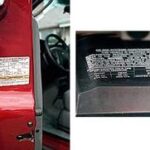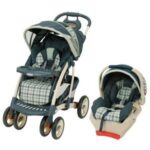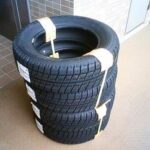All-wheel drive cars can do some amazing things on slick and snowy roads, but when you use the correct snow tires on these cars, there is not much you cannot get them to do in the snow!
Driving an all-wheel drive vehicle is definitely going to be much more stable during inclement weather than it would if you drove a rear wheel drive car. However, this nifty vehicle feature is not capable of solving certain hazardous driving conditions all alone. For that to work out as well as possible, the tires need to match the abilities of the vehicle.
That being said, if you are driving in a snowstorm in an AWD vehicle, and it is small and lightweight like a small SUV, then your typical all-season radial tire may not be sufficient to get you through a tough northeast blizzard safely. Of course a lot depends on where you actually live, and whether the roads are being cleared with plows and salt or cinders are being spread for deicing and traction assistance. If you are living in a remote area and the local services are not on the job as instantly as you need them to be, then there will be times when you are not going to get to your destination safely without having a set of good snow tires on your AWD vehicle.
Situations like driving through the mountains during a snowstorm will make you wish that you had opted for the snow tires instead of the basic all-season radials. Don’t get me wrong, there are some all-season tires on the market that are superior in regards to snow performance, but the average all season is best at dry or wet pavement period.
One of the problems with a decent AWD is not so much getting the car to go, but getting it to stop! Starting out in an AWD car is usually not a problem since you typically have at least three of the four wheels gripping. With newer models that have advanced traction controls, you may even have four tires gripping at all times. So this in itself lulls the average driver into a false sense of security and often will cause them to accelerate beyond a reasonable speed for the road conditions at hand. This is when they tend to panic and slam on the binders, which even with ABS and traction control can land that swift SUV right into the snow bank.
With a decent snow tire, the tread pattern is enhanced in such a way as to force the snow out from under the tread allowing the tires to gain traction even when the snow is fairly deep. An all-season tire does not have an aggressive tread pattern that allows maximum down force across a given surface area. If you experiment with tires as much as I have over the years, you will quickly find that a wider tire does nothing for traction when the snow is too deep. The narrower tires that put more pounds per square inch down to the pavement which seems to give the AWD and four wheel drive cars that I have driven much better traction than a wider tire allows.
Many of my friends and I have learned to keep a set of snow tires already mounted on spare rims so that when winter rolls around we just jack the car up and swap these tires. Storage of the set of tires not on the car can be an issue, and should be considered before choosing this option. There is a great amount of cost savings in doing it this way since you don’t have to revisit the tire shop twice a year to have them swap your tires. The effort of removing and replacing these tires a few times each can add to the wear and tear on them as well.
A decent snow tire will always improve the performance of any AWD vehicle, especially when you look around at some of the newer tires on the market today. One of the more interesting snow tire advances lately has been the advent of studded snow tires that have no metal studs added as the studs are built into the tires! This would be something I will be investing in when I purchase my next set of snow tires for my AWD vehicles.






